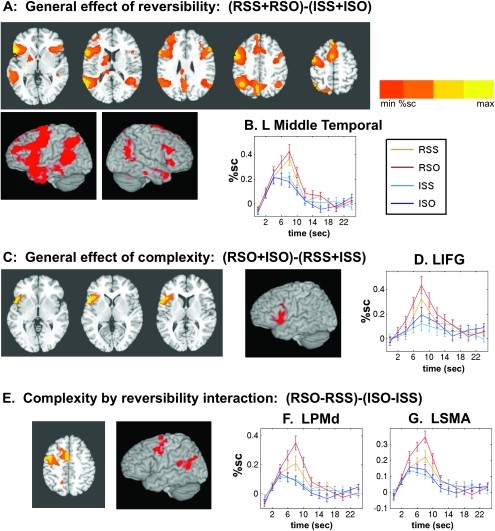Figure 3.
Effects of grammatical structure on auditory sentence comprehension. (A) General effect of reversible versus irreversible sentences. Axial slices at Talairach z = 2, 14, 26, 38, and 50. The left side of the image is the left side of the brain. (B) Response to auditory sentence events in left middle temporal cortex (Talairach −55, −52, +11), an area showing an effect of reversibility but not complexity. (C) General effect of complexity, object-embedded versus subject-embedded, regardless of reversibility. Axial slices at z = 0, 5, and 10. (D) Time course in LIFG, showing effect of complexity (Talairach −46, 12, 12). (E) Complexity by reversibility interaction: Object-embedded minus subject-embedded sentence effects, in reversible versus irreversible sentences. This contrast reveals areas activated for grammatical structure within reversible sentences but not within irreversible sentences. Axial slice at z = 43. (F) Time courses of the response to auditory sentences in left dorsal premotor cortex (Talairach coordinates −44,−2, +45). (G): Time courses of the response to auditory sentences in the supplementary motor area (Talairach −7, +2, +50).

